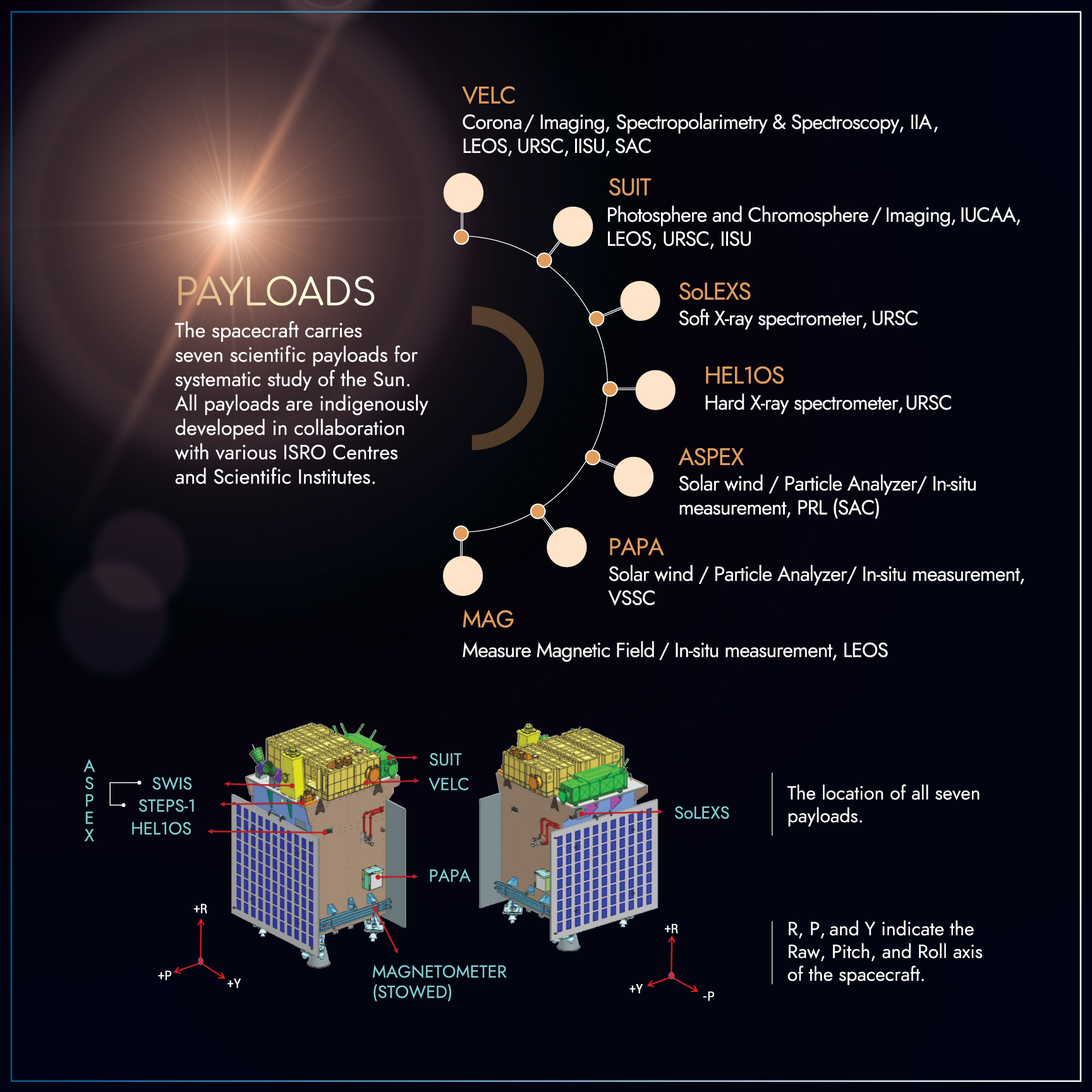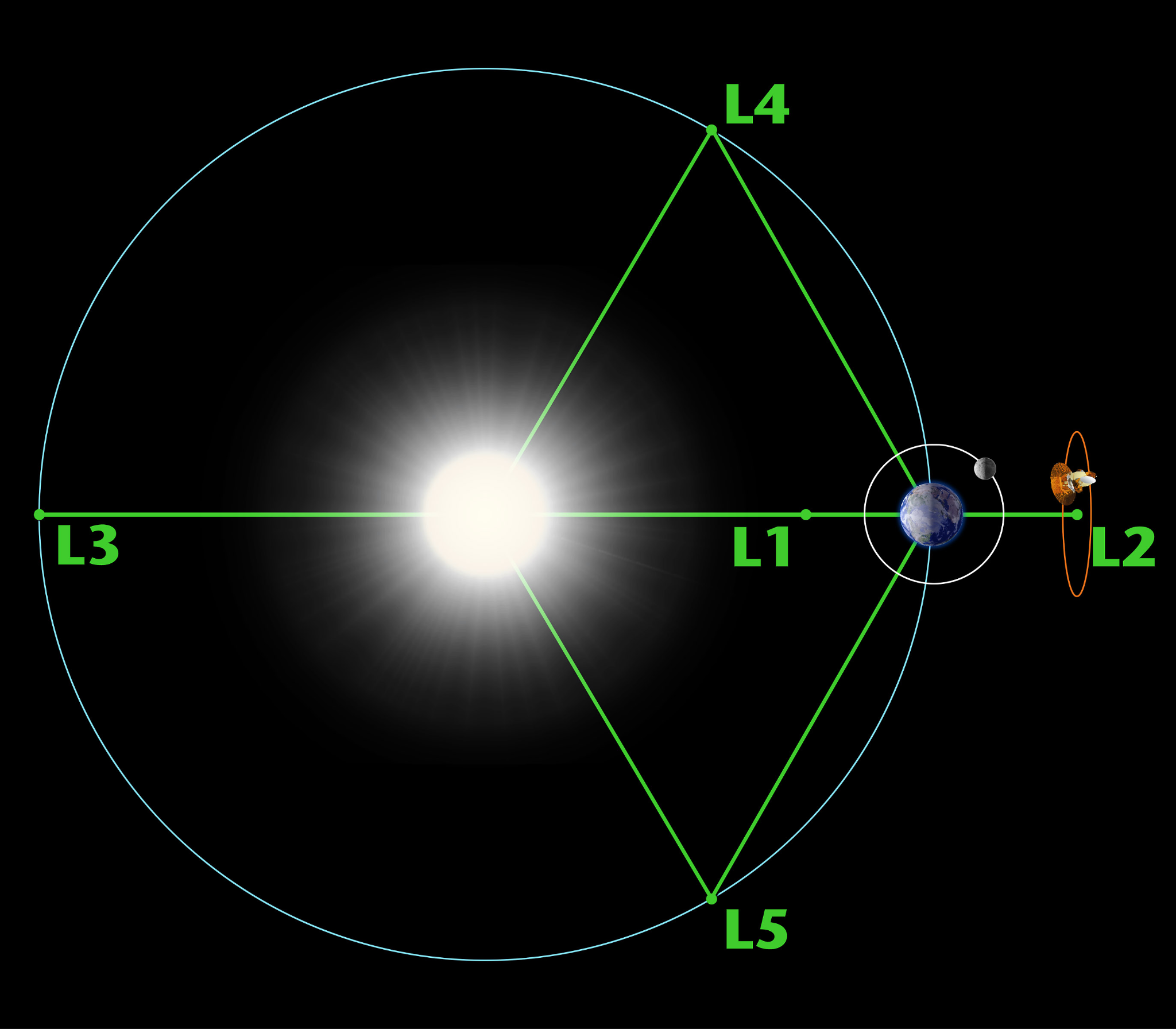Aditya-L1 Mission | 05 Sep 2023
For Prelims: Indian Space Research Organisation, Aditya-L1, ISRO’s Launch Vehicles, Lagrange Points in the Sun-Earth System, Solar flares, Coronal mass ejections.
For Mains: Significance of Exploring the Sun, India’s achievements in the field of Space Science and Technology.
Why in News?
Recently, the Indian Space Research Organisation (ISRO) has accomplished the launch of Aditya-L1, its inaugural Solar Mission.
- The launch was conducted using the PSLV-C57 rocket. The PSLV's fourth stage was fired twice, a first in ISRO's history, to precisely insert the spacecraft into its elliptical orbit.
What is Aditya-L1 Mission?
- About:
- Aditya-L1 is the first space based observatory class Indian solar mission to study the Sun from a substantial distance of 1.5 million kilometers. It will take approximately 125 days to reach the L1 point.
- Aditya-L1 is also ISRO’s second astronomy observatory-class mission after AstroSat (2015).
- The mission's journey is notably shorter than India's previous Mars orbiter mission, Mangalyaan.
- The spacecraft is planned to be placed in a halo orbit around the Lagrangian point 1 (L1) of the Sun-Earth system.
- Aditya-L1 is the first space based observatory class Indian solar mission to study the Sun from a substantial distance of 1.5 million kilometers. It will take approximately 125 days to reach the L1 point.
- Payloads:
- Objective:
- The mission aims to provide valuable insights into the solar corona, photosphere, chromosphere, and solar wind.
- The primary objective of Aditya-L1 is to gain a deeper understanding of the Sun's behavior, including its radiation, heat, particle flow, and magnetic fields, and how they impact Earth.
What are Lagrange Points?
- About:
- Lagrange points are special positions in space where the gravitational forces of two large orbiting bodies, such as the Sun and the Earth, balance each other out.
- This means that a small object, such as a spacecraft, can stay at these points without using much fuel to maintain its orbit.
- There are five Lagrange Points, each with distinct characteristics. These points enable a small mass to orbit in a stable pattern amid two larger masses.
- Lagrange points are special positions in space where the gravitational forces of two large orbiting bodies, such as the Sun and the Earth, balance each other out.
- Lagrange Points in the Sun-Earth System:
- L1: L1 is considered the most significant of the Lagrange points for solar observations. A satellite placed in the halo orbit around the L1 has the major advantage of continuously viewing the Sun without any occultation/ eclipses.
- It is currently home to the Solar and Heliospheric Observatory Satellite (SOHO).
- L2: Positioned directly 'behind' Earth as viewed from the Sun, L2 is excellent for observing the larger Universe without Earth's shadow interference.
- The James Webb Space Telescope orbits the Sun near L2.
- L3: Positioned behind the Sun, opposite Earth, and just beyond Earth's orbit, it offers potential observations of the far side of the Sun.
- L4 and L5: Objects at L4 and L5 maintain stable positions, forming an equilateral triangle with the two larger bodies.
- They are often used for space observatories, such as those studying asteroids.
- L1: L1 is considered the most significant of the Lagrange points for solar observations. A satellite placed in the halo orbit around the L1 has the major advantage of continuously viewing the Sun without any occultation/ eclipses.
Note: L1, L2, and L3 points are unstable, meaning that a small perturbation can cause an object to drift away from them. Therefore, satellites orbiting these points need regular course corrections to maintain their positions
What is the Significance of Exploring the Sun?
- Understanding Our Solar System: The Sun is the center of our solar system, and its characteristics greatly influence the behavior of all other celestial bodies. Studying the Sun enhances our understanding of the dynamics of our solar neighborhood.
- Space Weather Prediction: Solar activities, such as solar flares and coronal mass ejections, can impact Earth's space environment.
- Understanding these phenomena is crucial for predicting and mitigating potential disruptions to communication systems, navigation, and power grids.
- Advancing Solar Physics: Exploring the Sun's complex behavior, including its magnetic fields, heating mechanisms, and plasma dynamics, contributes to advances in fundamental physics and astrophysics.
- Enhancing Energy Research: The Sun is a natural fusion reactor. Insights gained from studying its core and nuclear reactions can inform our pursuit of clean and sustainable fusion energy on Earth.
- Improving Satellite Operations: Solar radiation and solar wind affect the functioning of satellites and spacecraft. Understanding these solar interactions allows for better spacecraft design and operation.
UPSC Civil Services Examination Previous Year Question (PYQ)
Q. Discuss India’s achievements in the field of Space Science and Technology. How has the application of this technology has helped India in its socio-economic development? (2016)


